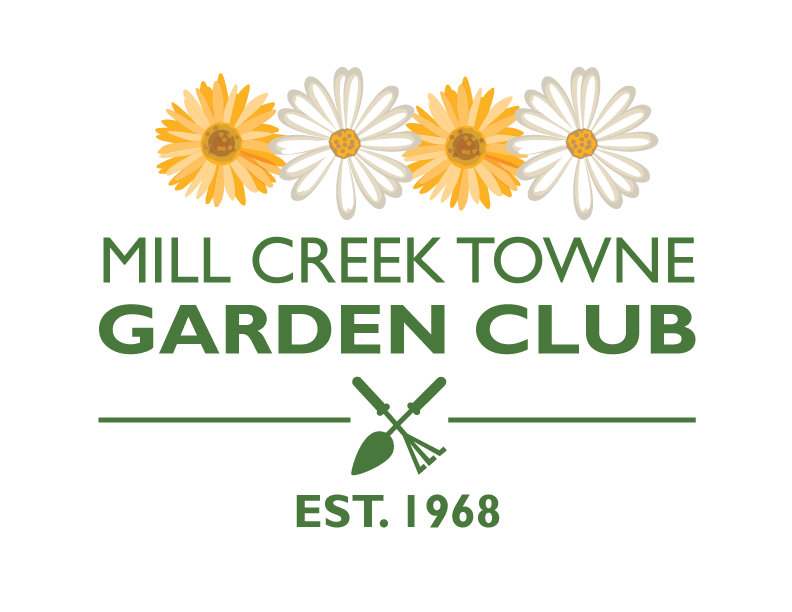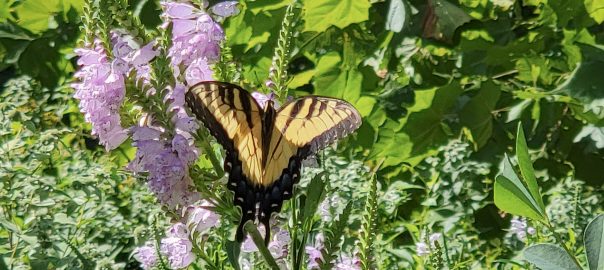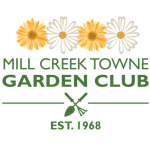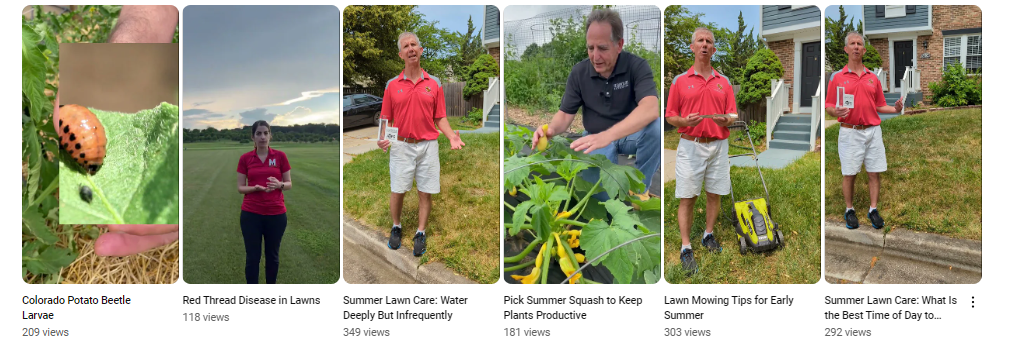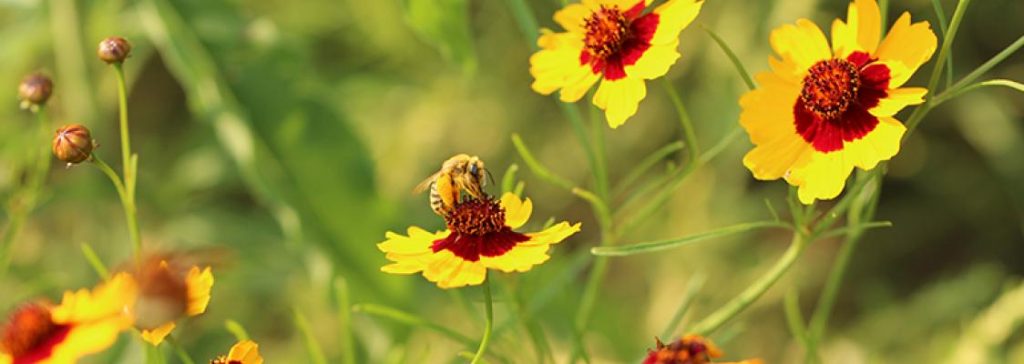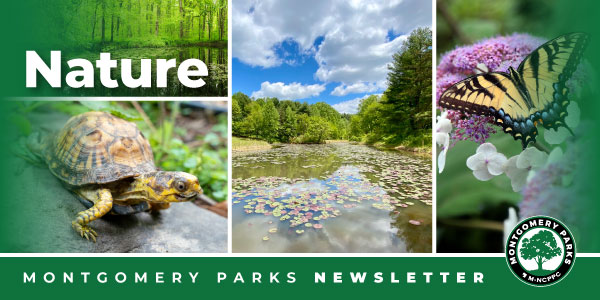Hello Friends, Neighbors, Fellow Gardeners,
Hope you have a Happy and Safe Labor Day! It’s the end of summer, so now is the time enjoy your harvest and prepare for the fall. Here are some garden tips, educational opportunities, and videos for September. A lot of gardening events are announced on Facebook as well as on our website. Some upcoming events/resources include a Fall Native Plant Sales, Climate Resilient Gardening Webinar Series, Nativescaping, Master Gardener Lectures – Gardening for Wildlife, Garden Discovery Day, Volunteer Gardener Opportunities with Montgomery Parks for SSL Hours, Montgomery College’s Home and Garden Lifelong Learning classes, American Horticultural Society’s Great American Gardeners Webinar Series, and more! These events will be hosted as online or live events.
Planning Tips
- It is harvest time and also a good time to start taking stock of what worked well for you this season and what didn’t.
- Mark and photograph your bulb plantings now, while they are still visible.
- Plan where fall bulbs will go.
- Check your local garden center for end-of-summer bargains.
- Order spring-flowering bulbs to arrive for planting this fall.
- Attend a local garden club meeting or plant exchange.
- Start or update your garden journals.
- Read a good gardening book or magazine.
- Plan who is going to water plants during your vacation.
- Volunteer at a local public or historic garden.
- Plan for 2024 with these Free resources: Landscaping with Native Plants by the Maryland Native Plant Society, Plant Invaders of Mid-Atlantic Natural Areas by the National Park Service, Master Gardeners of Northern Virginia Reading Room. Visit our Online Gardening Resources page for more helpful online resources.
- Buy a good gardening book or magazine subscription for a gift for your favorite gardener.
- Have a question about gardening? Check the University of Maryland Extension’s New Maryland Grows blog for garden tips.
Join Mill Creek Towne Garden Club!
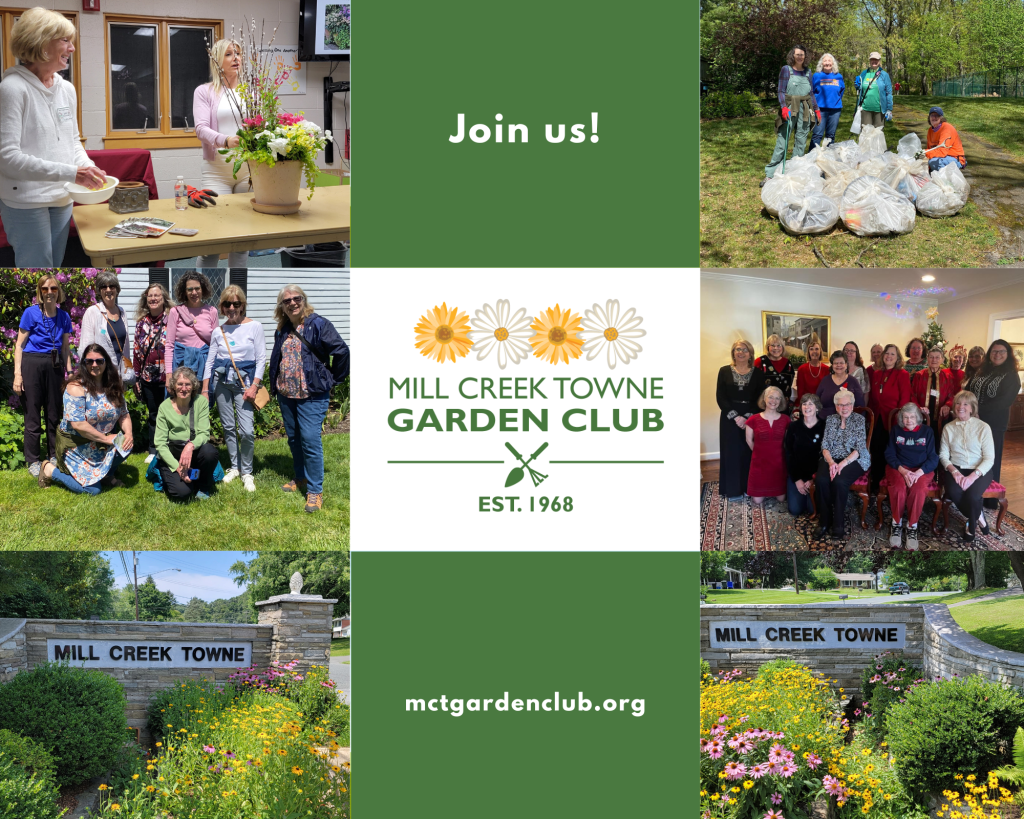
- Are you interested in gardening? Perhaps you’re a beginner, looking to learn more, or an experienced gardener interested in sharing your experiences and learning from others?
- Are you interested in making your home and community a more beautiful place to live?
- Are you interested in getting more involved in your community and getting to know your neighbors better?
Visit Our MCT Garden Club Website for Gardening Resources
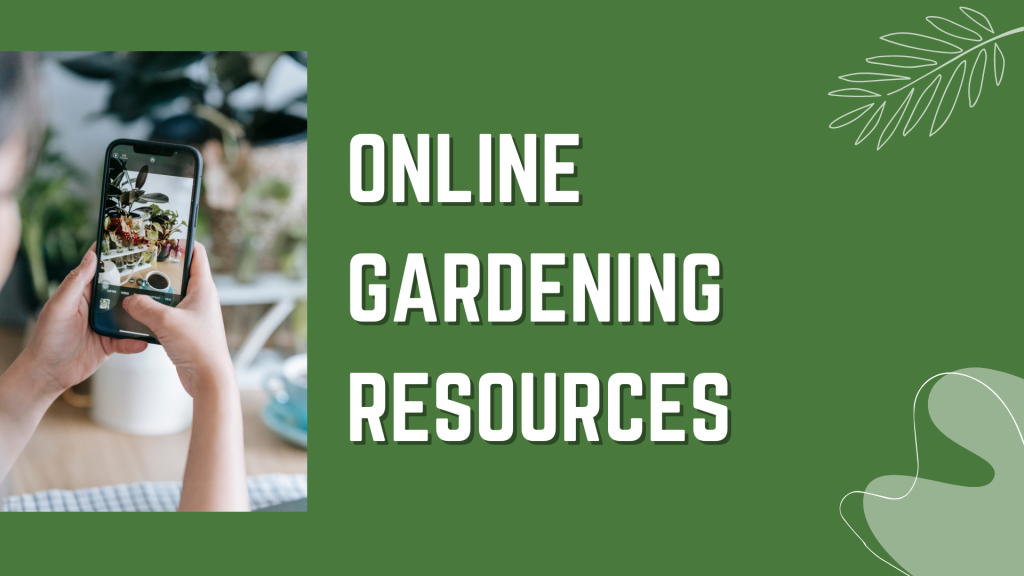
- Local Gardening Resources: Looking for a Master Gardener as a guest speaker, need gardening advice, or want to learn about resources in or near Mill Creek Towne? Visit our Resources page for details.
- MCTGC Blog: Check our monthly blog for garden tips and local/online garden-related events.
- Gardening Books: Looking for a gift for your favorite gardener? Visit our Gardening Books Resources page for holiday gift ideas.
- Local Gardens: Visit our Local Gardens page to learn about local gardens in our area.
- Montgomery County Farmers’ Markets: Support our local farmers. Check this page to learn about local farmers markets in our area or join a CSA and get fresh local produce year-round!
- Online Gardening Resources: Looking for gardening apps or online resources to help with your gardening? Check out our Online Gardening Resources page for some apps for your smartphone and online gardening resources focused on the DMV area.
- Recipes: Looking for a recipe for your home-grown veggies and fruit? Check our Recipes page for ideas.

Maryland Grows Blog
In weekly posts on MD HGIC’s blog, learn about pollinator conservation, growing native plants and food, and how to solve plant pest and disease problems.
MD HGIC Video Tips
Our Extension experts are sharing one-minute video tips to help you in the garden this summer. We’re talking about pest management in the vegetable garden, tree and lawn diseases, native plants, mowing lawns, and more!
For more information, please visit:
 |
|
What can Master Gardeners do for you?
- Help you select and care for annual and perennial plants, shrubs and trees.
- Determine if you need to test your soil.
- Provide you with information on lawn care.
- Identify weeds, beneficial and noxious insects, and plant diseases and remedies.
- Teach you how to use pesticides, mulch and compost.
- Guide you in pruning trees and shrubs.
- Provide you with options for managing wildlife.
- Provide you with gardening resources.
- Help you submit a plant sample for diagnosis
Plant Clinics are held at several sites in the county on a weekly basis and at special events such as garden festivals and the county fair. Regularly scheduled Plant Clinics are located at public libraries and farmers’ markets throughout the county as well as at the Audubon Naturalist Society in Chevy Chase. There are also clinics three days per week at Brookside Gardens. The busiest season is April through September, but some clinics are open year-round. Bring your plant samples and questions to one of these locations in Montgomery County, MD (see link below to find a location near you):
https://extension.umd.edu/mg/locations/plant-clinics
UMD Home and Garden Information Center: Ask a Master Gardener

Do you have a gardening question? Our Certified Professional Horticulturists, faculty, and Master Gardener Volunteers are ready to answer – year-round!
See below to ask a master gardener a question on the UMD Extension website:
Check out the revised list of Mid-Atlantic native plants for pollinators and beneficial insects, from the Xerces Society.
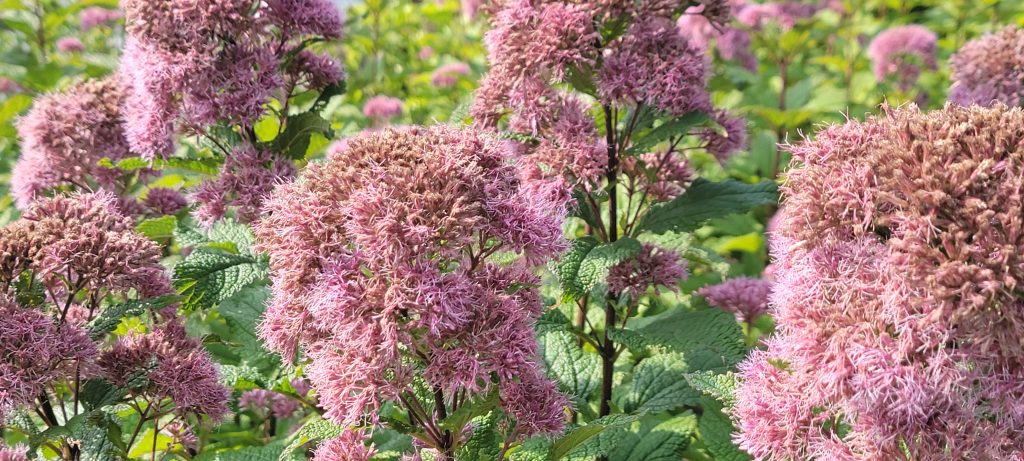
Flowers and Groundcovers
- Rake up weeds and their seedlings.
- Wait to mulch until ground freezes hard.
- Collect plant seeds for next year’s planting and for trading at the annual Washington Gardener Magazine Seed Exchanges.
- Begin replanting pots with hardy annuals.
- Take cuttings from coleus and begonias to propagate and over-winter indoors.
- Plant newly purchased plants.
- Continue to deadhead.
- Your summer annuals will be reviving, now with cooler temps and some rain. Cut back any ragged growth and give them fertilizer. They should put on a good show until the first hard frost.
- Remove spent annuals and replace with fall annuals. Water deeply.
- Cut fully yellow lily stalks.
- Fertilized established bulb beds.
- Dig up bulbs from your Gladiolus, Canna, Caladiums, and other tender bulbs; cut off foliage; let dry for a week; and store for the winter.
- Start bulb plantings of early spring bloomers at the end of the month.
- Check your container plants daily and keep them well-watered.
- Gently clean up the garden.
- Water thoroughly, especially if you receive no rain for more than seven days.
- Divide and cut back Bearded Irises and Peonies.
- Divide Hostas and Daylilies.
- Check for black spot on your roses – remove and discard any affected leaves in the trash, never back into your garden or in your compost – apply fungicide with Neem oil every two weeks during the growing season.
- Inspect your garden from powdery mildew. If seen, prune back perennials to create needed circulation. Discard properly (i.e., not in your compost bin).
- Hand-pick Japanese beetles or shake them off over a bucket of dishwater. Early morning is a good time to catch them, while they are still drowsy.
- Weed. Especially look for fast-growing vines such as honeysuckle, autumn clematis, bittersweet, wild grape, Virginia creeper, and poison ivy.
- Pests to watch for: Aphids, spider mites, whiteflies, deer
- Diseases to watch for: Powdery mildew, Rust
- See UMD’s HGIC Garden Tips for more details.
- For a list of native plant resources, visit: https://extension.umd.edu/hgic/topics/native-plant-resources
5 Million Trees Initiative
Maryland’s goal is to plant and maintain 5 million native trees by 2031. There are various ways you can get involved – plant trees and register them — or volunteer! A number of tree-planting assistance programs are available at the municipal, county, and state levels.
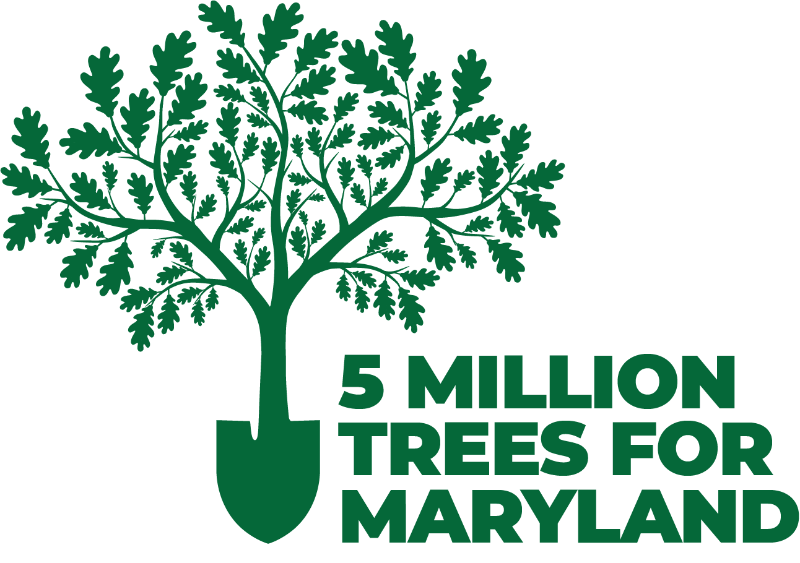
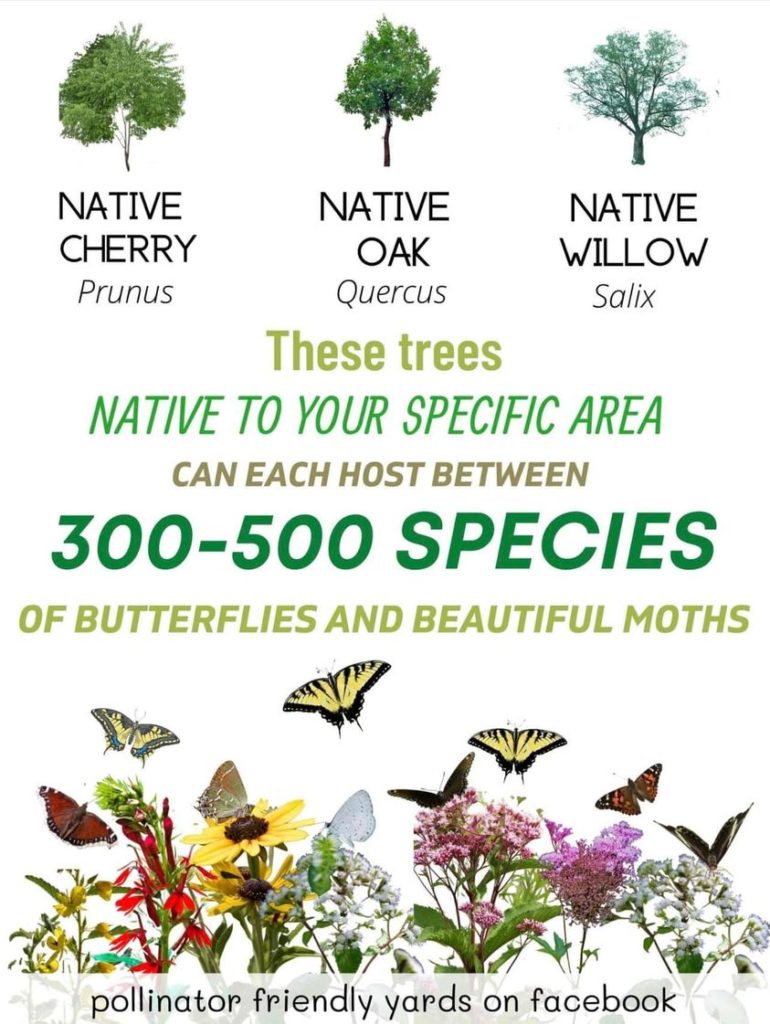
THIS is the SUPERPOWER of YOUR KEYSTONE NATIVE PLANTS.
- No exotic plant could ever achieve this.
- Want butterflies? Feed the caterpillars with keystone plants!
- Exotic plants will never support as many different species of caterpillars as the Keystone Natives can.
- Find your keystone native plants here by zip code.
If your zip code doesn’t give you enough information try zip codes of the nearest larger town or city. LINK: https://www.nwf.org/NativePlantFinder/
Trees and Shrubs
- Plant evergreens for a winter interest.
- Fertilize if necessary for the last time.
- Avoid late summer pruning.
- Water slowly and deeply if summer is very dry.
- If your conifers start shedding their needles or your spring bulb foliage starts peeking out of the ground, don’t worry. This is normal for our autumn cycle.
- Hold off on planting any new trees and shrubs until the summer heat has passed.
- Transplant trees and shrubs.
- Divide ornamental grasses.
- Contact an certified arborist to have your trees’ health inspected.
- Soil test established trees that have not been performing well.
- Check often and water newly planted trees if they don’t pass the finger test (stick your finger deep into soil – dry? Water!)
- If you MUST mulch, remove old mulch then add 2″ – 3″ shredded pine or pine needles, keeping 3″ away from trunk.
- Keep an eye out for bark damage from rabbits and deer.
- Spray broadleaf evergreens with anti-desiccant to prevent dehydration.
- Use fallen leaves for mulch or compost.
- Look out for any Poison Ivy vines, which will turn crimson in the late fall and be easy to distinguish from other vines.
- Remove Ivy, Pachysandra, and other vine-like groundcover from under shrubs.
- Mulch or compost healthy leaves.
- Remove fallen, diseased leaves.
- Put diseased leaves, pesticide-laden grass clippings and weed seeds out for recycling rather than the compost pile.
- Turn your compost pile weekly and don’t let it dry out. Work compost into your planting beds.
- Remove rotting fruit from fruit trees and compost them.
- Spray with dormant oil to decrease pest infestations.
- Remove dead and dying trees.
- Pests to watch for: Eastern tent caterpillar, voles, and deer.
- Diseases to watch for: adelgids, aphids, azalea lacebug, borers, bagworms, caterpillars, leafminers, Gypsy moths, sawfly, webworm, spidermites, scale, and Japanese beetles.
- For more tips, see UMD’s HGIC Garden Tips for more details.
Herbs, Veggies, and Fruit
- Keep an eye out for the first frost date. In Zone 7, it is predicted to be between October 15 and November 15.
- Plant cover crops in vegetable gardens and annual beds. Continue planting cool-season vegetables (rye, clover, hairy vetch, winter peas, turnips, carrots, beets, spinach, Swiss chard, Chinese cabbage, kale, and Brussels sprouts); plant garlic now through the end of October.
- Pick mature tomatoes and peppers to ripen over your window sills.
- This is a good time to have vegetable garden and landscape soils tested.
- Pick apples at a local pick-your-own farm or visit a local farmer’s market.
- Watch your pumpkins/squash. Harvest them when their rinds are dull and hard.
- Pot up rosemary and chives for over-wintering indoors.
- Harvest your herbs often and keep them trimmed back to encourage leafy growth.
- Harvest leaves of herbs used in cooking (rosemary, basil, sage) in the early morning for best flavor.
- Cut herbs and flowers for drying indoors.
- Preserve gourds and dry flowers for display in the fall.
- Water deeply when needed.
- Remove finished plants.
- Harvest regularly from your vegetable garden to prevent rot and waste.
- Harvest onions when tops die back.
- Deadhead garlic chives before they go to seed. Makes a nice cut flower.
- Direct-sow vegetable seeds.
- Plant strawberries in a site with good drainage for harvest next spring.
- New fruit plants – keep watered their first spring, summer, and fall.
- Hand-pick cabbage worms from cabbage and broccoli.
- Thin seedlings.
- Apply dormant oil spray to fruit trees.
- Pests to watch for: Asparagus beetle, aphids, cabbage worms, corn borer, corn earworm, cutworms, Japanese beetles, squash vine borer, and tomato hornworm.
- Diseases to watch for: Powdery mildew, fungal, bacterial, viral diseases.
- Here are some more UMD’s HGIC Garden Tips.
Lawns
- Fertilize your lawn and reseed if needed.
- Over seeding may be done now through October.
- Keep newly seeded lawns well watered.
- Apply fertilizer and lime to turfgrass based on soil tests and UME recommendations.
- Test soil if you haven’t already.
- Move in the early evening and cut off no more than one-third of the grass height at one time. Leave clippings on the ground to provide nutrients.
- Sharpen your lawnmower blade.
- Dethatch if necessary and plug aerate BEFORE applying weed control.
- Clean yard of all leaves and other debris.
- Turn your compost pile.
- Diseases to watch for: brown patch, and red thread
- Pests to watch for: Grubs
- See UMD’s HGIC Garden Tips for more details.
Indoors/Houseplants
- Bring in tender plants before night temps dip into 60°.
- Bring in houseplants if you took them out for the summer.
- Take cuttings of plants you want to overwinter inside and place in water.
- Look out for slug eggs grouped under sticks and stones; they are the size of BBs and pale in color.
- Prune potted bougainvillea or hanging baskets that will overwinter inside.
- Begin conditioning Christmas cactus and poinsettias indoors to get them ready for the upcoming holiday season.
- Bring Amaryllis indoors before a hard freeze. Repot every other year at this time. Store in a cool, dark place and do not water until flower buds or leaves emerge.
- Give your houseplants a quarter turn every few weeks.
- Keep all houseplants out of drafts and away from heat vents.
- Keep succulents and cacti on the dry side.
- Repot root-bound houseplants and start fertilizing them.
- Do not over water house plants.
- Check on your container plants daily and keep them well-watered.
- Remove old leaves, damaged stems.
- Pinch out growing tips of leggy cuttings and plants that are overwintering.
- Clean the leaves of your indoor houseplants to prevent dust and film build-up.
- Pests to watch for: aphids, spider mites, mealybug, scale, and whitefly .
- See UMD’s HGIC Garden Tips for more information.
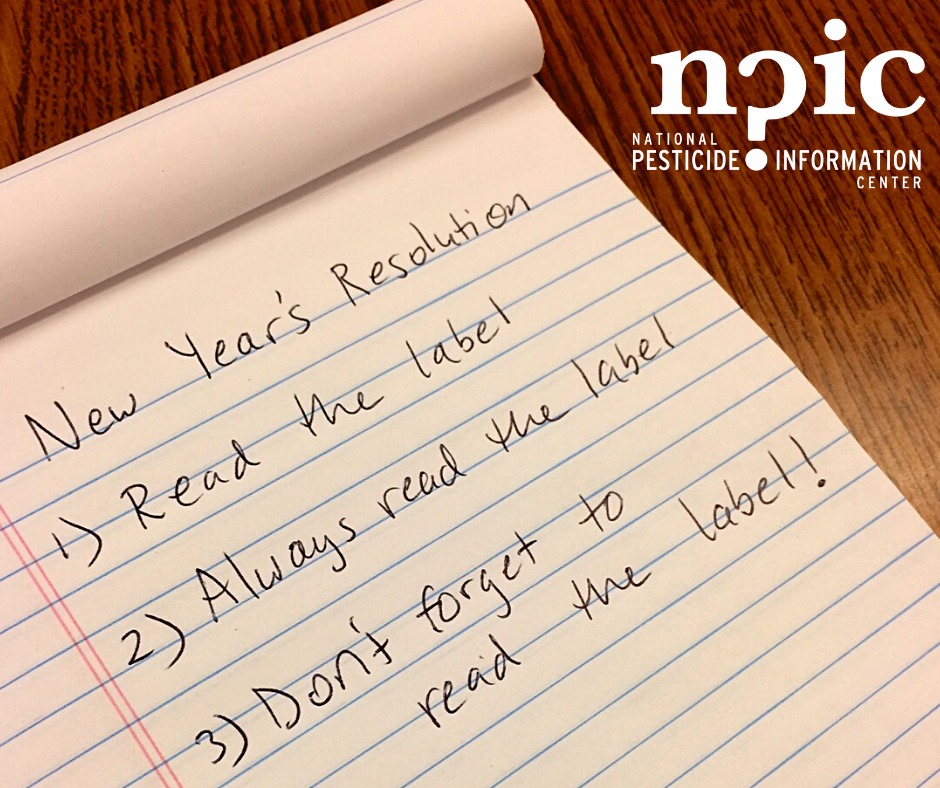
Read and follow label instructions on all pesticides and herbicides.
Start the year off by minimizing your #risk to #pesticides and always #ReadTheLabel! Learn more here: http://npic.orst.edu/health/readlabel.html
Questions about your label? Call us! 800-858-7378 M-F 8am-12pm PST
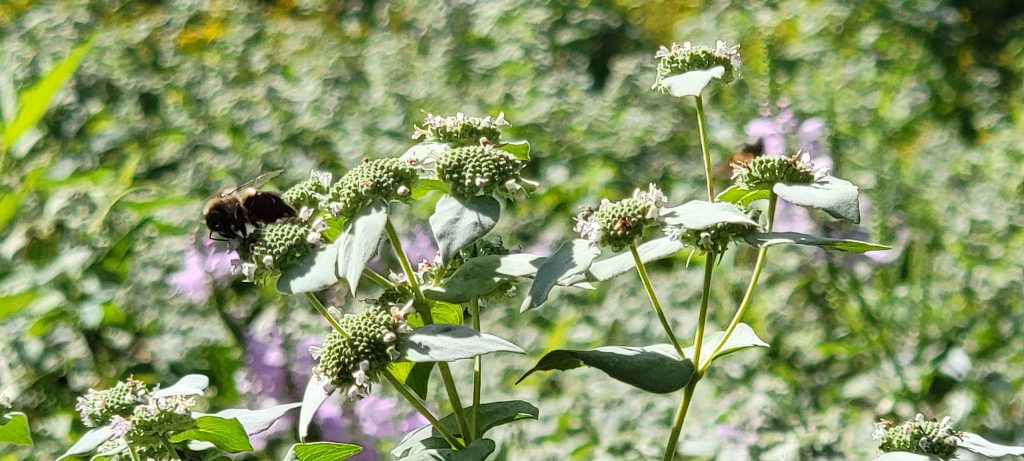
Indoor/Outdoor Insect and Wildlife Tips
- Check indoors for termites and winter ants.
- This is the perfect time to apply grub control.
- If you see spotted lanternfly in your garden, do not spray with chemicals or home remedies because it may harm beneficial insects and pollinators.
- Caulk and seal your outside walls to prevent insect entry into your home.
- Check for any stagnant water mosquito breeding grounds, especially your gutters. Dump out any water that sits stagnant for more than three days.
- Add Mosquito Dunks to any standing water in your yard such as birdbaths, downspouts, plant saucers, and gutters.
- Check your plants at night with a flashlight for any night-feeding insects like slugs.
- If you find slug damage, set out beer traps or Sluggo pellets.
- Watch for insect and disease problems throughout your garden.
- Leave hummingbird feeders out until October 15.
- Start feeding birds to get them in the habit for this winter.
- Put suet out for birds.
- Keep bird feeders clean and filled.
- Wash out birdbaths weekly with diluted bleach solution.
- Clean your hummingbird feeders and add new sugar-water every three days.
- Switch your deer deterrent spray.
- Set out traps for mice, moles, and voles.
- Watch for: eggs, larvae, overwintering stage of many species, carpenter ants, flies, stink bugs, termites, rabbits, raccoons, groundhogs, deer, mice, moles, snakes, squirrels, and voles.
- For more information, see UMD’s HGIC Garden Tips.
Source: University of Maryland’s Home and Garden Information Center (HGIC) and the Washington Gardener.
See more tips from HGIC:
Climate Resilient Gardening

2024 Climate and Biodiversity Action Webinar Series
Select Wednesdays, 4:00 – 5:30 p.m. | FREE
This year’s theme is regeneration. Join Dr. Sara Via, Professor and Climate Extension Specialist, for webinar discussions on these topics:
- September 18 – Progress in the Energy Transition
Recordings will be available afterward. | Details and registration
Nativescaping
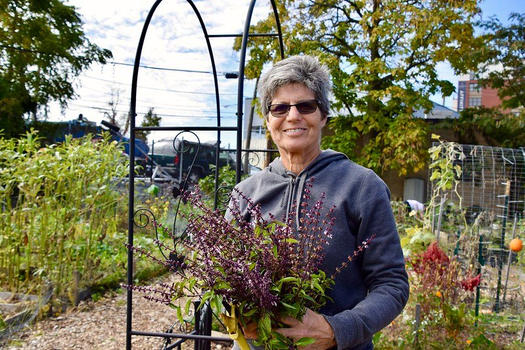
Want to learn how to incorporate native plants into your home garden? Join Montgomery Parks for five in-person classes at Locust Grove Nature Center. Sign up for individual classes ($20 each) or join us for the whole series and get one class free ($80). The program begins Sunday, September 8.
Master Gardener Lectures – Gardening for Wildlife
Saturday, September 14: 2:00pm – 3:00pm

Rockville Memorial Library – 2nd Floor Meeting Room
21 Maryland Avenue
Rockville, MD 20850
AGE GROUP: TEENS, OLDER ADULTS, ADULT
EVENT TYPE: LECTURES AND DISCUSSIONS ENVIRONMENT
Gardening for Wildlife with Marie Rojas: This lecture will give attendees insights on how to create a wildlife habitat and plants that support wildlife including beneficial insects, birds, and amphibians.
Montgomery Parks Nature Newsletter
Fall Native Plant Sales
Transform your yard into a wildlife haven! Shop our Native Plant Sales and beautify your backyard while attracting beautiful birds, butterflies, and other pollinators.
Fall Plant Sale at Pope Farm to Support Locust Grove Nature Center: September 21 and 22 | 10 am to 2 pm | In-person sale | Pope Farm Nursery
Learn all about the plants you can buy with our Nativescaping Series!
From Plant Sales to fire making, to kayaking and so much more! Check out all this and more in the latest edition of the newsletter:
Montgomery Parks – Hot Volunteer Opportunities!
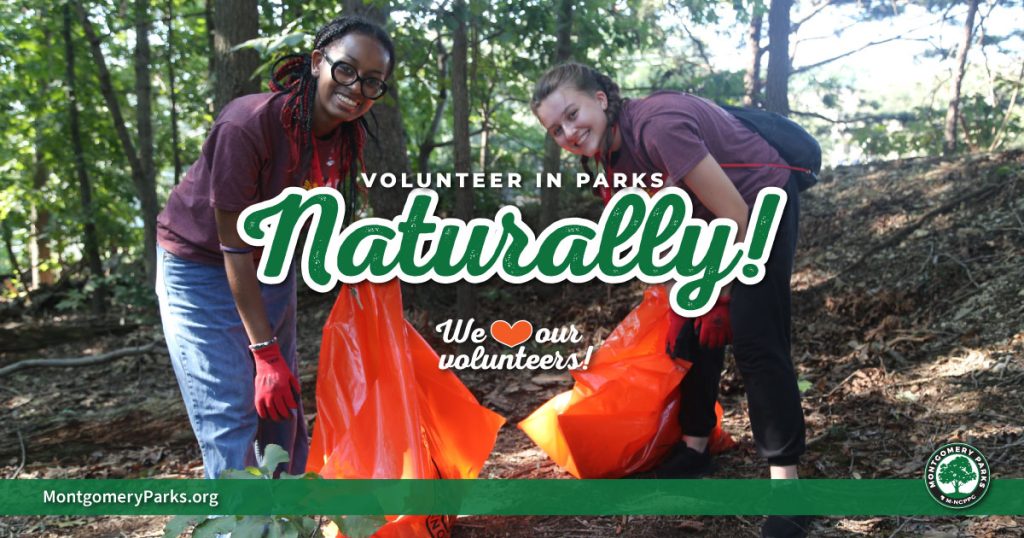
| Are you looking for a way to complete your Student Service-Learning Hours? Or are you looking for a way to give back to your community? Check out these gardening volunteer opportunities: Gardener | Various dates and times | Ages 16+ | Agricultural History Farm Park Gardener | First Tuesday of every month beginning May 7 through October 1 | 9 am to 1 pm | Ages 21+ | Silver Spring Intermediate Neighborhood Park Crop Production Aide | Various dates and times | Ages 18+ | Pope Farm Nursery Grown@Pope Volunteer Coordinator | April through September | Ages 18+ | Pope Farm Nursery Grown@Pope Workdays | Various dates and times | Ages 16+ | Pope Farm Nursery |
Garden Discovery Day
Saturday, September 21, 2024
Montgomery County Agricultural Center
16 Chestnut Street
Gaithersburg, MD 20877
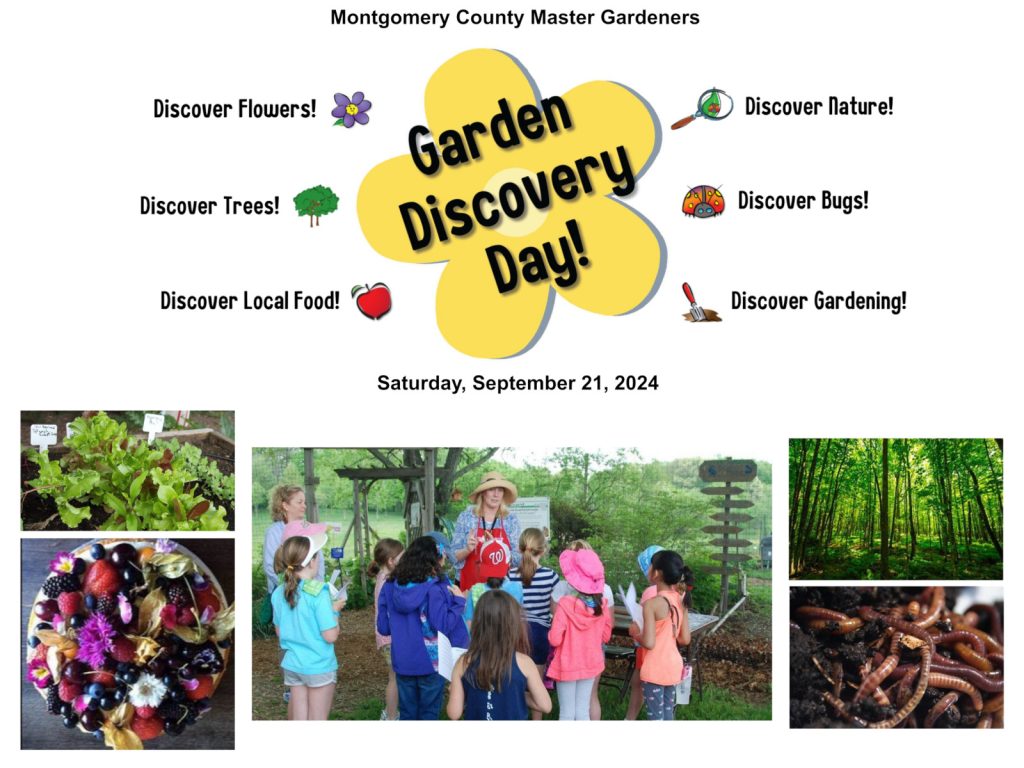
University of Maryland Extension and Montgomery County Master Gardeners are proud to present Garden Discovery Day for children grades K-12 on September 21st at the Montgomery County Fairgrounds. Programs will cover a variety of topics from growing seasonal plants to sustainable food systems in the county. Plant a garden to take home! Find out what are good and bad bugs! Children will experience live demonstrations and participate in take-home activities. The event is open to all, but registration is required. Session prices range from $10 to $18 depending on the session. Find all the details and register here:
Montgomery College Lifelong Learning Home and Garden Classes – Fall 2024

See Schedule of Fall Classes below:
| HOW TO GROW AND BLOOM – LLI 022 | ||||||||
| View Catalog Description & Prerequisites | ||||||||
| Course | CRN | Credits | Days | Time | Start – End Dates | Campus | Location | Instructors |
| LLI022 | 24355 | 0.300 | S | 6:30 PM – 9:30 PM | 11/09/24 – 11/09/24 | WDCE Virtual-Remote | DL | Janet S. Johnson |
| GARDEN DESIGN – LLI 519 | ||||||||
| View Catalog Description & Prerequisites | ||||||||
| LLI519 | 24368 | 0.800 | T | 6:30 PM – 8:30 PM | 10/22/24 – 11/12/24 | Rockville | MK 101 | Janet S. Johnson |
Let’s Talk Gardens
Thursdays 12 to 1 p.m.
Smithsonian Gardens

“Grow” your gardening know-how! Our free online gardening program, Let’s Talk Gardens, covers a wide range of topics presented by our own professional staff, as well as guest speakers.
And we encourage you to watch videos in our Let’s Talk Gardens Video Library.
